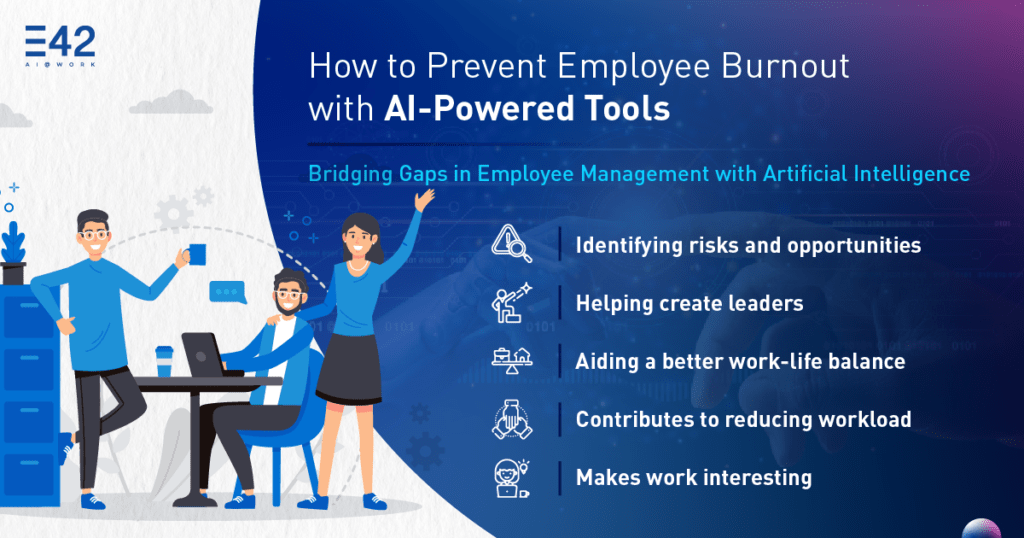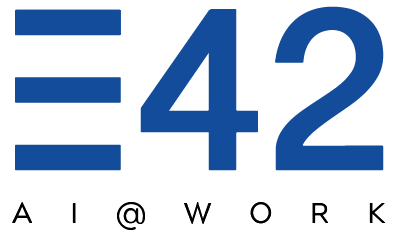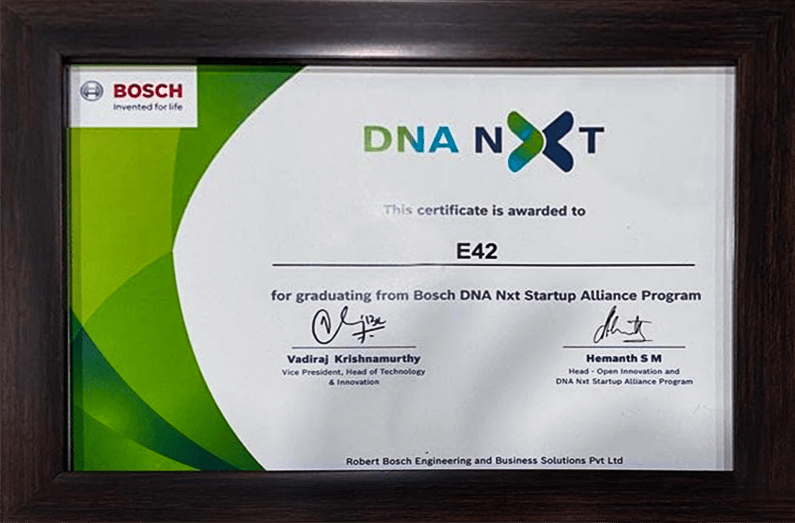The monotony of repetitive tasks can cause anyone to experience burnout. It has become common in today’s fast-paced, high-pressure work environment. With so many tasks to accomplish on a daily basis, it’s only natural to feel physically and mentally exhausted. The fact is, 7 out of 10 employees experience burnout at some point. That means a whopping 70 percent of all employees go through it. What’s more, 50 percent of those employees tend to look for a job change and by the time their employer realizes what’s happening, the decision to quit has been made. So, how do you prevent this from happening? How do you make an employee’s job easier and improve retention? The answer is pretty straightforward. Leverage the power of artificial intelligence (AI) in HR to enhance employee experience!

The pandemic-induced ‘great resignation’ is evidence that in today’s world, employees are not willing to put up with an outdated working environment. With so many opportunities out there, employees are more than willing to quit if they don’t feel appreciated or are forced into rigid schedules. This is where AI steps in. Powered by cognitive abilities, AI co-workers can be pre-fed with necessary data and can be trained to engage employees on a personal level.
Bridging Gaps in HR Management with Artificial Intelligence
Burnout is a major problem. It’s now recognized as a medical condition. But, it’s not the only reason for an employee’s resignation. Apart from the ones who leave due to burnout, 70 percent leave for other reasons, like, if they don’t feel motivated, valued, or are passed up for a promotion. So, let’s take a look at how you can reduce employee burnout at work with AI:
Artificial intelligence in HR management helps in identifying risks and opportunities
By implementing artificial intelligence in HR management, organizations can gauge the current industry skills. They can also identify employees who deserve a promotion based on accumulated data. AI co-workers for HR process automation can increase engagement, monitor performance, and ensure employees feel valued and motivated. The yearly review is outdated and ineffective for large organizations. These organizations often face high employee burnout rates. However, with AI-led automation in HR operations, organizations can understand employee needs as they arise.
Artificial intelligence in HR operations helps create leaders
By implementing AI-led automation in HR, organizations can gauge current industry skills. They can groom employees to grow with the company rather than constantly hiring new candidates to fill gaps. Depending on the organization’s requirements, employees can be placed in various training programs. This will ensure that they accomplish company goals while making them feel appreciated. AI solutions can automate complex, time-consuming processes to free the human task force from many tasks. This allows them to focus on more pressing needs, like training and mentoring skilled contributors to add value to the organization. Thus, reducing employee burnout.
Automation in HR operations provides better work-life balance
A rigid schedule, the pressure of targets, and the lack of time for familial obligations contribute to employee burnout. To address these issues, organizations can implement artificial intelligence in their HR function. Leveraging AI to schedule work based on employee skills can improve job satisfaction. Alternatively, AI-powered Employee Welfare Managers can reach out to employees in a timely manner. These managers provide support and motivation to help employees overcome workplace or personal challenges. Besides, to gather employee feedback, AI-retention tools can generate surveys. These surveys collect data on individual employees’ moods and sentiments. The collected data is then analyzed to provide insights and inform strategic decision-making. By leveraging AI, organizations can intelligently strategize and design the best possible employee experience.
Role of Artificial Intelligence in HR helps in decreasing workload
Cognitive process automation (CPA)-based AI automation in HR management simplifies the hiring process. Employees no longer need to sift through numerous resumes to find the right candidate. AI takes care of tasks like engagement, training, and onboarding. This allows the HR team to focus on building strong employer-employee relationships. The same applies to customer support and receptionists. AI co-workers can think and reason faster than humans, making them suitable for automating various processes. From customer support to HRM, AI can handle monotonous and repetitive tasks. As a result, overall workplace productivity is boosted.
Automate your HR management process to make work interesting
Implementing AI-led automation tools in HR processes can help organizations reduce mundane and monotonous tasks performed by employees. This allows employees to focus on more creative and engaging tasks that are interesting. As a result, employee satisfaction can increase, and employees can avoid being overburdened with work pressure.
Unlock the power of intelligence with E42 AI co-workers
Conclusion
The bottom line is this: nobody likes to feel ignored, underappreciated, or overworked. Happy employees are vital for a smoothly functioning organization. AI-based employee retention tools provide various ways to boost employee satisfaction. They enable regular mood checks and provide management with relevant data. This helps in making informed decision-making. artificial intelligence in HR can reduce burnout at work and save time and resources on unnecessary talent acquisition. Whether for SMEs or conglomerates, AI is the key to excellent employee management!
Enhance your Employee Retention Initiatives with E42
E42 offers you specialized AI co-workers that are built to increase employee retention. They automate employee engagement, gauge employee mood, and pinpoint areas for improvement. Thus, contributing to lowering attrition and disengagement. These AI co-workers also offer a comprehensive approach to enhancing employee experience and streamlining HR administration while ensuring that the employees feel motivated and valued. To implement artificial intelligence in your HR function and witness benefits like employee retention and cost savings, write to us at interact@e42.ai!



